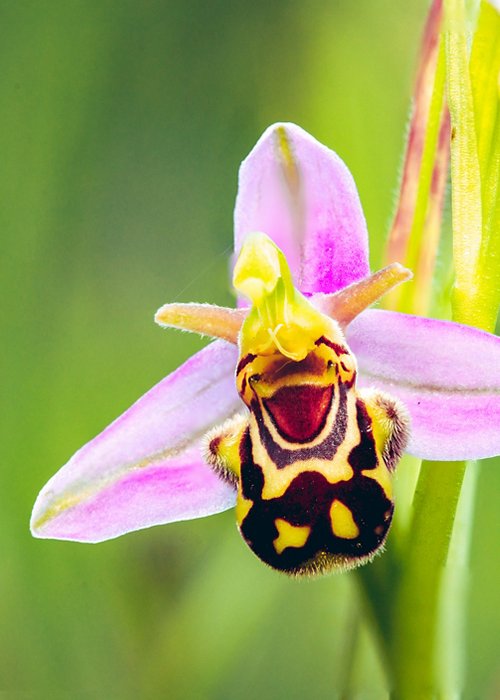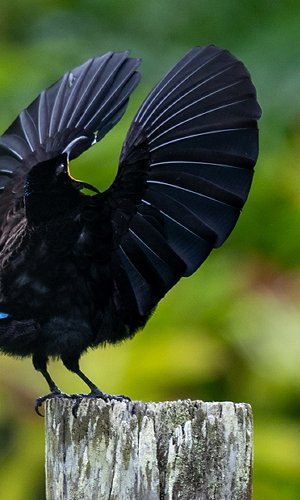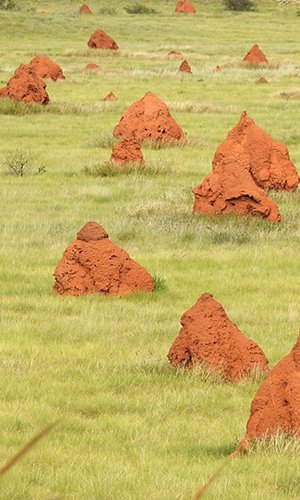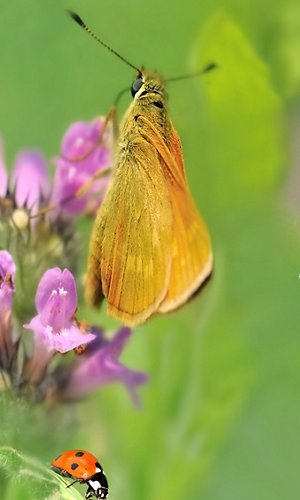From ancient Greek, μιμέομαι meaning “to imitate”, mimicry is a phenomenon whereby some species take on the appearance of another organism, or the colours, shapes or other characteristics of the environment in which they live. Perhaps the best-known imitators originate in the animal kingdom: for example, chameleons; polar bears, white amid the perpetual snow, or the famous peppered moth, more common in the black-bodied variant in areas, alas, covered by the soot of the first industrial revolution. Yet even plants are authentic champions with regard to mimicry, and recently scientists are discovering that bacteria have some very sophisticated forms of camouflage, above all to avoid being recognised by the host organism (molecular mimicry) as pathogenic agents. For example, Streptococcus pyogenes disguises itself by modifying its capsule, synthesising hyaluronic acid, a compound present in abundance in some tissues, for example in the skin of mammals, thus making itself seem innocuous to the host organism (molecular mimicry). But let’s continue for the moment to look at plants, because in the plant kingdom we will see some interesting things!
Bakerian mimicry
From the name of the man who discovered it, Herbert Baker, Bakerian mimicry is a form of intraspecies disguise in which, that is, the mimicry takes place between organisms belonging to the same species. In the case of plants, what happens most commonly is that the female flowers, which do not produce pollen, take on the form of male flowers, deceiving pollinating animals. The result is that these animals, most commonly insects, attracted by the flowers and believing that they will find pollen, settle on the female flowers, which thus can be more easily pollinated. This strategy, for example, is very common amongst the Caricaceae, a family of tropical plants to which the papaya belongs, which was studied by Herbert Baker himself.
Dodsonian mimicry
Efforts at resemblance, however, may also occur between organisms from differing species. In other words, one “copycat” species is able to exploit its similarity with another species, which generally lives in the same territory (sympatric species), to its own advantage. This form of mimicry is called Dodsonian mimicry, named after the botanist Calaway H. Dodson, and is, for example, very common in orchids, of which Dodson was a great expert. As with Bakerian mimicry, in this case too, it is a form of imitation that involves the reproductive organs of the plant and deceives, attracting them, the pollinating insects, without however giving them pollen in return. This category, for example, includes Epidendrum, a member of the Orchidaceae family, that imitates the flowers of the Verbenaceae family, rich in pollen.
Pouyannian mimicry
Yet plants can lie even more blatantly and even go beyond the borders between kingdoms and succeed in pretending to be… insects! Perhaps one of the most fascinating forms of mimicry is in fact that described for the first time by M. Pouyanne. In this case too, orchids are a source of amazement: the Ophiris apifera, for example, owes its name to the fact that its flower is so similar to a bee that the drones (male bees) are attracted to them and, convinced that they are mating with females, guaranteeing pollination by flying from one stalk to the other. The plant’s strategy can be extremely sophisticated: often the resemblance is not just visual, but also olfactory and tactile!
Vavilovian mimicry
Do not imagine that plants deceive only insects. As Nikolai Valivov demonstrated at the beginning of the last century, the plant kingdom succeeds in confusing the ideas even of humans. After careful observation, in fact, this Russian agronomist and geneticist, noted that some “weeds” in wheat fields resemble very many species cultivated for food production and that often they were therefore accidentally selected by farmers. A well-known instance of this is barnyard grass, which very much resembles rice and which, due to this, was preferred by farmworkers, starting from selection of
seeds.
Batesian mimicry
Other plants, on the contrary, have “discovered” that for them it was extremely advantageous to take on appearances that seem like an alarm bell for herbivores. This form of mimicry is called Batesian (named after the naturalist Henry Walter Bates) and allows plants to protect themselves from any predators without “paying the costs of defence”. Of the many, one form of mimicry that is truly fascinating is one that for example links plants to some butterfly species. One particular species of Passiflora (the same genus to which the passion fruit belongs) has developed a yellow spotted leaf colouring that simulates the presence of the eggs of Heliconius – a butterfly – the larva of which feed voraciously on plant material. Probably, this mechanism serves to dissuade “passing butterflies” from laying eggs on that plant. The adults, believing that they find themselves faced with leaves that will be particularly crowded with caterpillars, thus go and lay their eggs on leaves that are less “competitive” for their offspring.
Cryptic mimicry
An authentic camouflage strategy is that of cryptic mimicry, which takes place when an organism blends in with the surrounding environment. A unique example of this is Boquila trifoliolata, a climbing vine that lives in South America and that, surprisingly, is able to change the shape of its leaves. By making them similar to the host plant, this creeper succeeds in blending in with it and deceiving any predators. In a certain sense, we can say that this plant is the equivalent of the chameleon in the plant kingdom!




